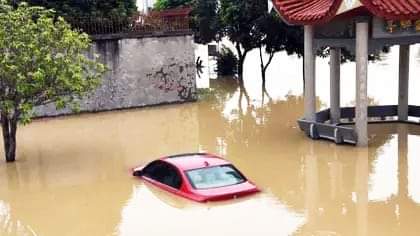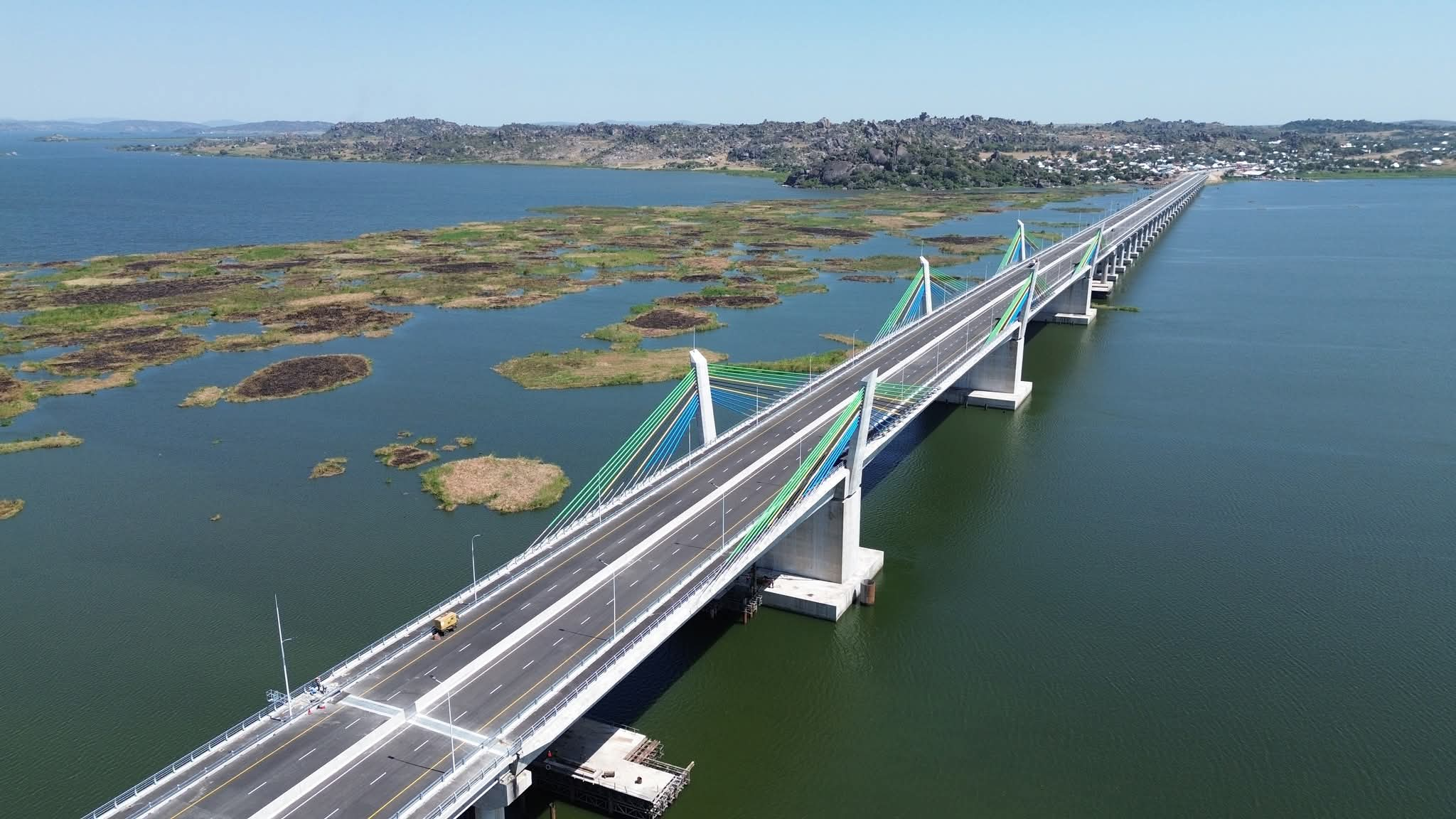WEATHER: The 1975 Super Typhoon Nina and Other Destructive Storms in History

Did you know that Typhoon Nina, a tropical storm that struck China in 1975, collapsed almost six million buildings and affected 11 million people, running up an economic toll of $1.2 billion?
From the dawn of civilization to today, floods have caused more human deaths and wreaked more extensive devastation than any natural force. The same rivers that offer life and the promise of sustainable sustenance can, in a season of floods, wipe out the people who depend on them.
In a work cataloging deadly floods, China would rate its own chapter, if not its own book. The 1931 central China floods alone resulted in an estimated 4 million deaths and affected a quarter of China's population, making it one of the worst natural disasters in history and helping to earn the Hwang Ho, or "Yellow River," the nickname "China's Sorrow." In 1887, its floods killed 2 million people, and the 1931 and 1938 floods took the lives of almost 5 million [sources: Hudec; NOAA News].
However, these resulted from months or years of accumulating drought, rain and storms that combined to create conditions ripe for disaster, and thus didn't constitute a single storm; for similar havoc occurring as the result of a single weather event, we have to turn to 1975's Super Typhoon Nina.
Nina's unparalleled destructive power derived not from its winds but from the catastrophic flooding it triggered. Indeed, the typhoon had already spent most of its strength crossing Taiwan's central mountain range and had weakened to a tropical storm by the time it struck China [source: Weyman]. As it stalled over the mainland, Nina cranked out 42 inches (1,060 millimeters) of rain in 24 hours -- a year's worth of central China's precipitation, delivered in a day. The deluge collapsed the Banqiao Dam and destroyed more than 60 other dams along with it [source: Xinhua].
As the dams buckled, a 6.2-mile-wide (10-kilometer-wide), 9.8-23-foot-high (3-7-meter-high) wave blasted across the lowlands at speeds approaching 31 mph (50 kph), destroying an area 34 miles (55 kilometers) long and 9.3 miles (15 kilometers) wide [source: CCTV]. The floods swept tens of thousands of survivors downstream and submerged thousands of square kilometers of land, killing 26,000 people. An additional 145,000 later died of disease and famine (some estimates place the death toll closer to 230,000) [sources: Goldstein; Xinhua].
In all, Nina collapsed almost 6 million buildings and affected 11 million people, running up an economic toll of $1.2 billion [source: Weyman]. In lives destroyed, and physical and economic impact, Nina truly towers among other typhoons as most destructive storm.
Below are some other major natural disasters that afflicted huge numbers of people:
◼️Bhola Cyclone
Cyclones striking Bangladesh tend to cause immense devastation because the country's topography conspires to amplify their impact. Thus, the 1970 storm, nicknamed the Bhola Cyclone, proved to be one of the worst natural disasters in recorded history, even though it made landfall as only a Category 3 storm. Fatality estimates range from 300,000 to 1 million people, although most put the tally at closer to 500,000.
◼️The Vargas Tragedy
From Dec. 14-16, a storm poured a year's worth of rain down on the vertical slopes of the Sierra de Avila Mountains north of Caracas, triggering flooding and some of the most massive landslides and debris flows in world history [source: Wieczorek]. The subsequent devastation smashed more than 8,000 homes and 700 apartment buildings. It wrecked roads, telephone and power lines, and water and sewage systems, running up a total bill of around $1.79 billion [source: Wieczorek]. An estimated 30,000 people died, but only about 1,000 bodies were ever recovered; debris flows and floods buried many of the remainder or swept them out to sea [source: USAID].
◼️The Great Hurricane of 1780
The devastating death toll of the Great Hurricane of 1780 exceeds even that of Hurricane Mitch. An estimated 22,000 people perished between Oct. 10 and 16 in the eastern Caribbean, most of them in the Lesser Antilles, with the heaviest losses occurring on the islands of Martinique, St. Eustatius and Barbados [source: CDERA].
◼️Hurricane Mitch
On Oct. 26, 1998, within a few short days of its Caribbean birth, Mitch slammed into the northeast coast of Honduras as a Category 5. Mitch's floods, mudslides and winds wrecked crops and wiped out population centers throughout Honduras and areas of Nicaragua, Belize, El Salvador, Guatemala and Mexico. It demolished hundreds of thousands of homes, blew and washed away residents, and obliterated harvests. More than 11,000 people lost their lives, most of them in Honduras and Nicaragua, and thousands more went missing [source: Encyclopaedia Britannica].
◼️The Galveston Storm
On Sept. 8, 1900, Galveston, Texas, braved a storm of biblical proportions, the deadliest natural disaster ever to strike U.S. territory. The day before it struck, the island city, located just off the Texas coast in the Gulf of Mexico, was a place of 37,000 people and bright economic prospects; the next day, its population had dropped to 31,000, and the city had sustained millions of dollars in damage [source: The 1900 Storm].
◼️Iran Blizzard
After four years of drought, Iran must have been desperate for water in any form -- any, that is, but the weeklong February 1972 blizzard in which it arrived, the storm dumped 10-26 feet (3-8 meters) of snow in outlying areas of northwestern, central and southern Iran, cutting off roads, cables and telephone lines, and trapping 4,000 villagers beneath its freezing blanket [sources: NOAA News; Raein]. Elsewhere, two massive avalanches buried an estimated 8,000 people.
◼️Hurricane Katrina
Trouble began brewing in the Atlantic in August 2005, when the storm formed in the vicinity of the Bahamas and swept across southern Florida. Katrina spawned 62 tornadoes across the Southeast and killed more than 1,800 people in numerous states [sources: Johnson; Louisiana Department of Health]. Louisiana suffered the greatest number of fatalities. There and in Mississippi, the storm surge annihilated entire coastal communities, with the final financial toll of Katrina nearly incalculable, but estimates place the total financial impact at $200 billion [source: Galvin].
◼️Daulatpur-Saturia, Bangladesh Tornado:
On April 26, 1989, a tornado touched down in the Manikganj district of Bangladesh and was found to have caused nearly 1,300 deaths, making it the deadliest tornado in recorded history [source: Encyclopaedia Britannica].
◼️Tri-State Tornado
Sweeping out from southeastern Missouri on March 18, 1925, the U.S. Tri-State Tornado achieved an average speed of 62 mph (100 kph) and topped out at 73 mph (117 kph). It covered more than 36 times as much ground as an average tornado. In total, 2,027 people sustained injuries from the tornado's passage, and 15,000 homes were destroyed. Entire towns were obliterated [source: SEMP].
Source:
https://science.howstuffworks.com/nature/climate-weather/storms/most-destructive-storms.htm


_1755775186.jpg)
